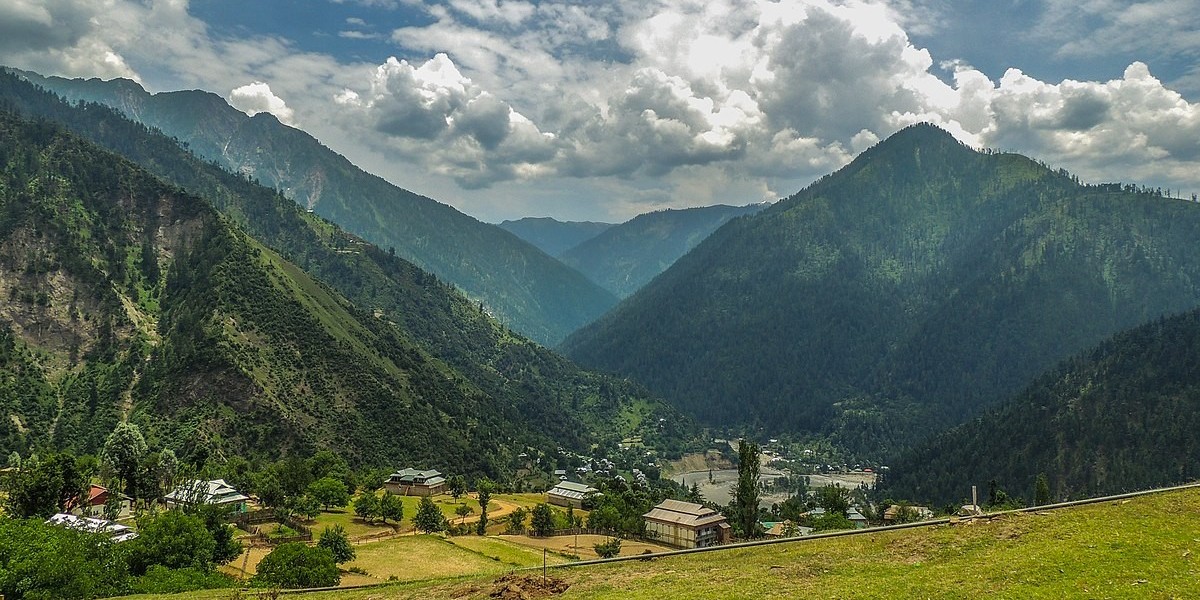Nestled in the northern reaches of Pakistan, Azad Jammu and Kashmir (AJK) is more than just a landscape of mesmerizing valleys, lush meadows, and snow-capped peaks. It is a vibrant cultural region steeped in centuries of artisanal tradition. Handicrafts from Azad Kashmir are not merely decorative items; they are rich expressions of identity, history, and resilience—each piece telling a story passed down through generations.
A Living Heritage
The handicrafts of Azad Kashmir reflect a heritage that intertwines utility and aesthetics. These crafts developed organically within communities, shaped by the geography, climate, and available resources. Over time, they evolved into intricate art forms, many of which are still practiced today. Items like Pashmina shawls, woodcarvings, papier-mâché, namda rugs, embroidery, and basketry are treasured both locally and internationally.
At the heart of each handcrafted object is an artisan whose skills have been honed over decades—often inherited from parents or grandparents. Despite modern challenges such as mass production, economic hardship, and political instability, these artisans remain dedicated to preserving their craft.
Pashmina: The Fabric of the Mountains
Perhaps the most iconic of Kashmiri handicrafts is Pashmina, a fine cashmere wool derived from the undercoat of the Changthangi goat, found in the Himalayas. In Azad Kashmir, artisans hand-weave this soft, warm wool into exquisite shawls and scarves. The process is painstakingly slow; a single shawl can take several weeks to complete.
Zahida Bano, a master weaver from Muzaffarabad, has been weaving Pashmina for over 30 years. “My mother taught me how to spin and weave. We used to sit by the fireplace in winter and work by the light of kerosene lamps,” she recalls. Zahida’s daughters are now continuing the legacy, blending tradition with newer design elements to appeal to a broader market.
Pashmina weaving isn’t just a job for Zahida—it’s a cultural inheritance. Her shawls feature traditional Kashmiri motifs like the chinar leaf, paisley, and floral vines, often hand-embroidered with needlework known as sozni.
The Art of Woodcarving
Azad Kashmir is blessed with forests of walnut, deodar, and chir pine trees, which provide the raw material for the region’s celebrated woodcarving. Artisans craft furniture, jewelry boxes, and decorative panels adorned with intricate designs that tell stories of local folklore and natural beauty.
Muhammad Arif, a woodcarver in Bagh, has spent four decades perfecting his art. “Every piece of wood has a soul,” he says. “Our job is to bring it out with our hands.” Arif’s hands, gnarled from years of carving, move deftly across the grain as he etches out a repeating pattern of blooming flowers. His shop, though modest, is filled with work that has been sold to homes in Islamabad, Lahore, and even overseas.
Arif worries that fewer young people are taking up the craft. “There is no formal training center, and many think this work doesn't pay,” he explains. But he is hopeful, as his son recently joined him and is learning the family trade.
Papier-Mâché: Colorful Narratives
Papier-mâché, or "kar-i-kalamdani," is another Kashmiri art form that thrives in Azad Kashmir, particularly in areas like Rawalakot. The craft involves making decorative items—such as vases, bowls, and ornaments—out of paper pulp, which is molded, dried, and hand-painted with intricate designs.
Tariq Hussain, a papier-mâché artisan, takes pride in continuing this delicate art despite economic hardship. “It is not just decoration,” he explains. “These designs represent Kashmiri tales, gardens, and dreams.”
Tariq’s family workshop includes his two sisters, who are skilled in painting traditional Mughal patterns and floral motifs. The family has adapted their designs over time to include more modern color palettes, making their products appealing to both local and international buyers.
Namda Rugs: Felted Warmth and Tradition
The namda is a type of felt rug, made by pressing wool together instead of weaving. These rugs are both functional and decorative, offering insulation against the cold floors of mountain homes. In Azad Kashmir, especially in the rural areas of Neelum Valley and Haveli, namda-making is still practiced by a small number of artisans.
Shireen Gul, a 65-year-old woman from a village near Athmuqam, has been making namdas since she was a child. She uses natural dyes from plants and minerals to color the wool, which is then shaped into circular or rectangular mats adorned with simple embroidery. “I used to make namdas for dowries,” she laughs. “Now tourists buy them to take a piece of our valley with them.”
Namdas are a blend of functionality and folklore. Each rug often contains symbols that represent blessings, fertility, or protection from evil.
Embroidery: Threads of Identity
Embroidery in Azad Kashmir is a widespread skill, traditionally passed on to young girls as part of their upbringing. The styles vary by region, with crewel embroidery, sozni work, and mirror work being among the most prominent.
Nazia Khan, a teacher and part-time embroiderer in Kotli, sees her embroidery as a form of storytelling. Her pieces often incorporate verses of Kashmiri poetry and traditional proverbs sewn into shawls and cushion covers. “When I stitch, I feel connected to my roots, to my grandmother, who taught me not just the stitches but the stories behind them,” she says.
In recent years, several women’s cooperatives have emerged, helping artisans like Nazia to sell their embroidered goods online and at craft expos. This not only provides income but also recognition for their cultural labor.
The Challenges and the Way Forward
Despite the richness of Azad Kashmir's handicrafts, artisans face numerous challenges. Limited access to markets, lack of institutional support, and competition from machine-made imitations threaten the sustainability of these traditional arts. Younger generations are often discouraged by the meager financial returns, leading to a decline in the number of practitioners.
However, there is hope. NGOs and government bodies have begun initiating skill development programs, micro-loans for artisans, and online platforms to connect rural craftspeople with global markets. The growing interest in sustainable and ethically sourced products also bodes well for the future of handmade crafts from Azad Kashmir.













